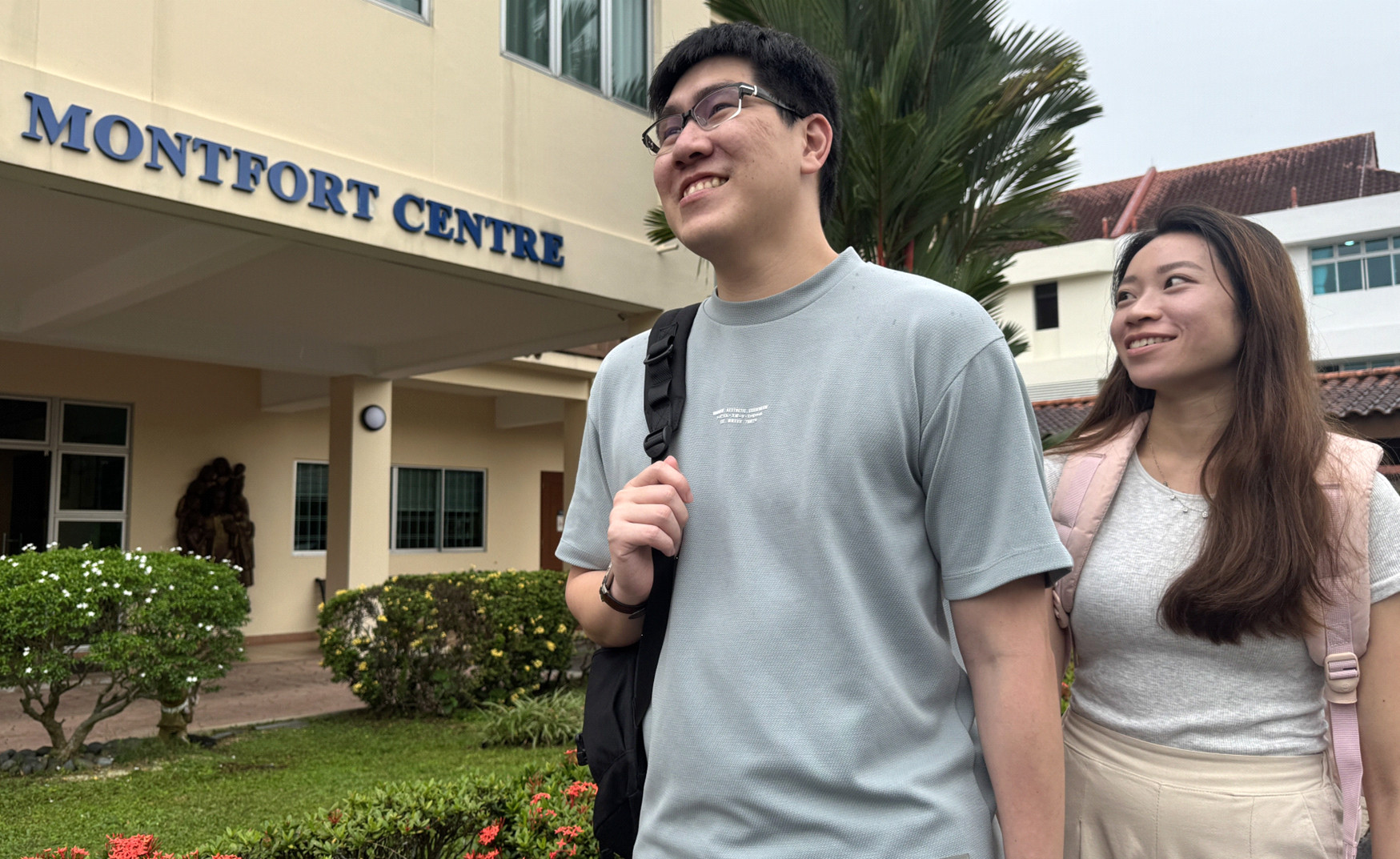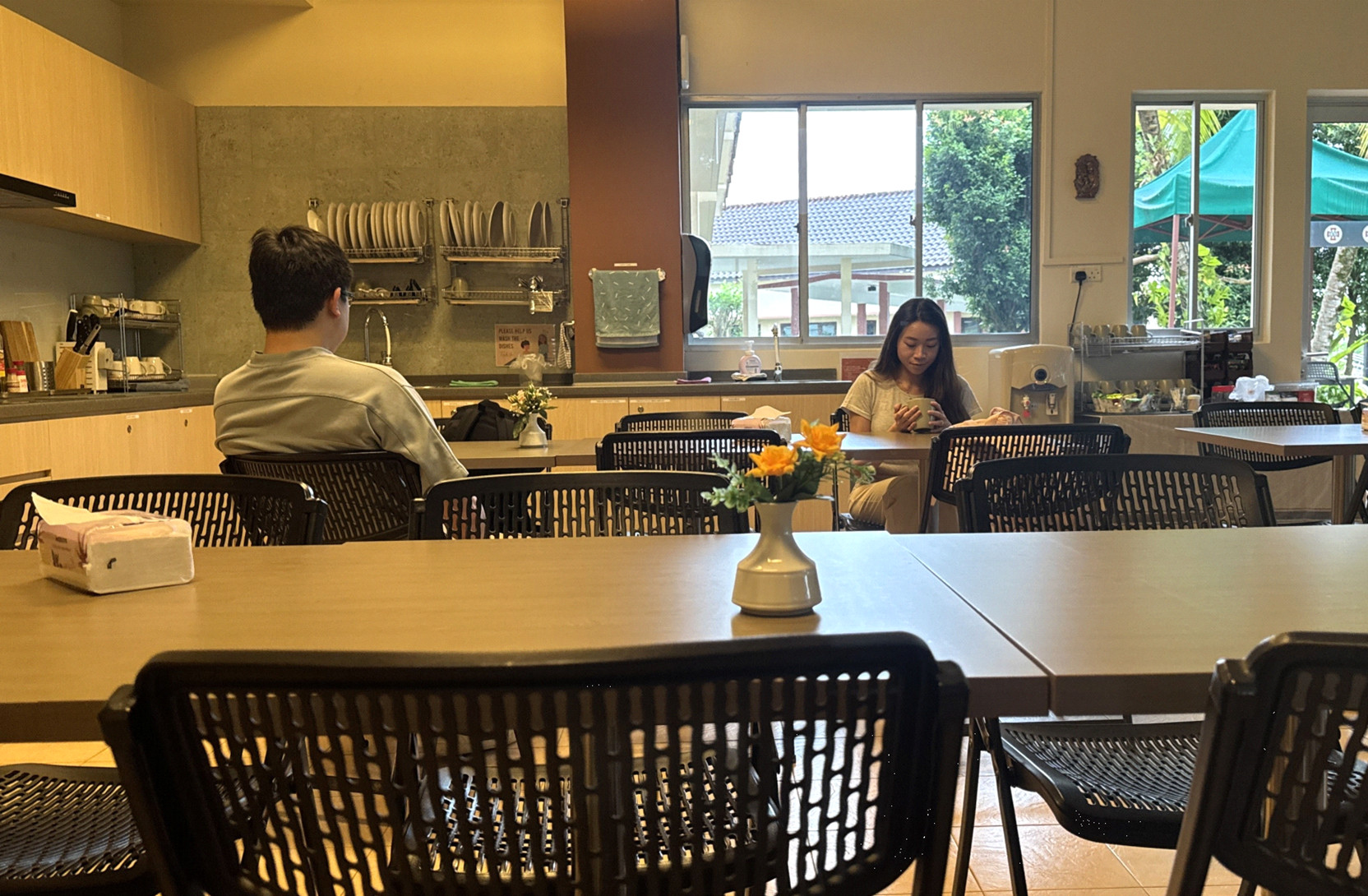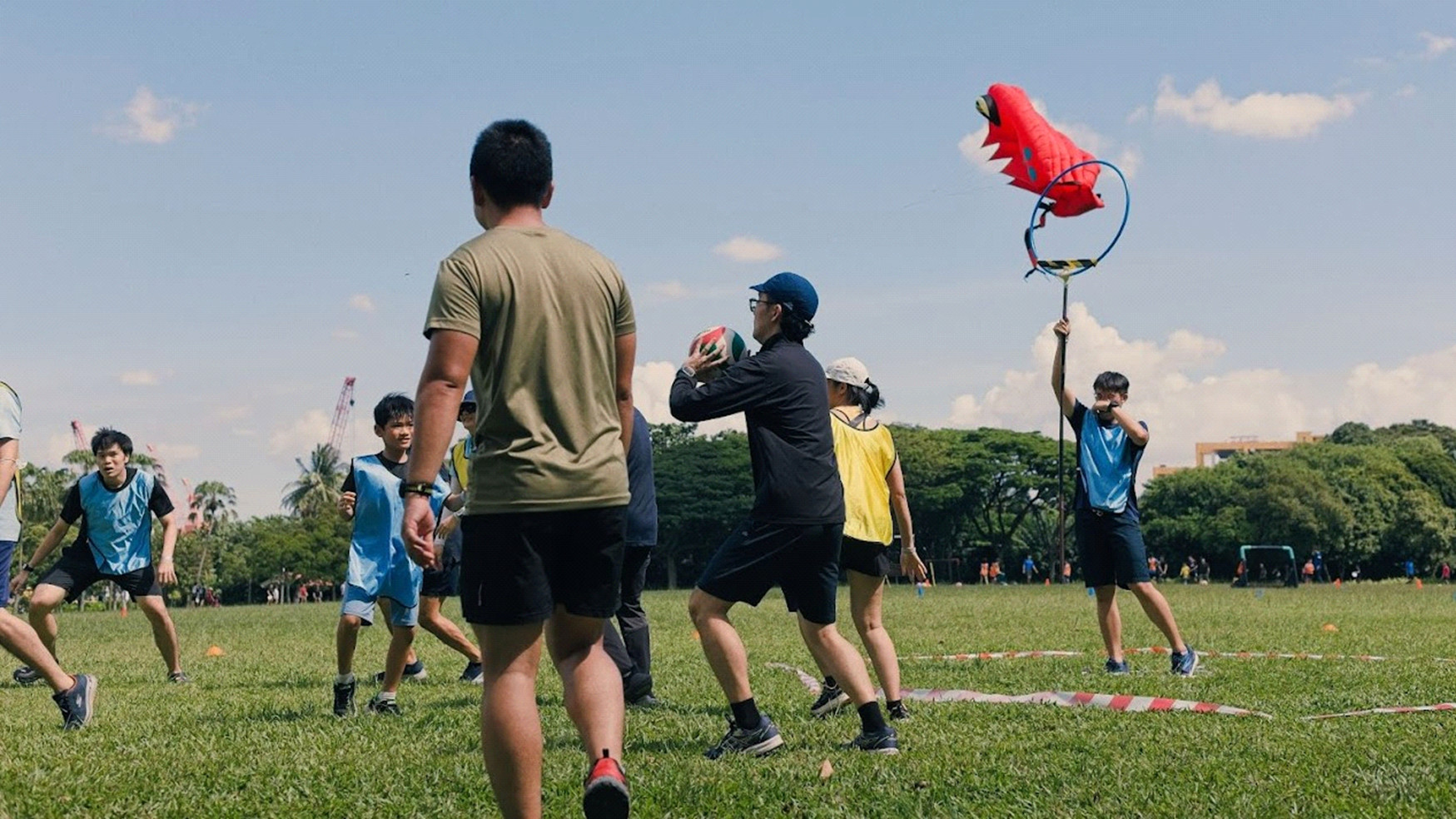
A silent retreat can help one step off life's never-ending treadmill, offering space to pay attention to what is really going on in one's heart.
I didn’t sign up for my church’s recent, first silent retreat of my own accord. In fact, I’d just returned from an overseas trip and would have been more than happy to stay at home and catch up on rest. Also, to be honest, the idea of paying an attendance fee to refrain from talking wasn’t appealing at first. I could save my money for something else, and lazing around at home would be more comfortable. The only reason for my attendance at the retreat was to accompany Jamie, my wife. We got married last August. Jamie was looking forward to setting aside quiet time to reconnect with God. So, out of loyalty, I signed up. Well, a part of me was interested in learning the tools for spiritual discipline and finding out how focused time with God felt like. A silent retreat is time set aside to leave the noise of the world and our daily routines behind, and spend quiet, intentional time with God. A silent retreat is not a high-energy church camp because there are no conversations, group games, or busy activities to occupy the time. It’s quite the opposite. We were, instead, invited to maintain silence throughout the retreat, avoiding small talk, phone use, and unnecessary noise to create space to reflect, rest, and listen. The retreat was two days, one night long. Silent retreats have roots in several religious traditions, particularly within Christianity and Buddhism. The modern idea of silent retreats, as we know them, emerged in the late 19th and early 20th centuries. Retreats became popular in the West from the 1960s as people got interested in contemplation and meditation. Jamie and I checked in to Montfort Centre in the upper Bukit Timah area at 9am. Our spiritual director was our senior pastor, Rev Lee Kien Seng. When we arrived with our bags, we saw that there were twenty of us. Jamie and I found our room on the second floor, and we were glad that though talking was discouraged, we weren’t required to sleep one to a room. The room was about 10 feet by 15 feet. It had a window, one table, two chairs and two single beds. It had air-con. There was wi-fi. Before the retreat, we had received some preparatory instructions. We didn’t have to surrender our mobile phones, tablets or computers but we were encouraged to refrain from surfing the internet and using social media at the retreat. Books were not banned but it was implicitly understood that they weren’t needed at the retreat. A set of reference notes about spiritual disciplines was given to us. Pastor Kien Seng, in his introductory briefing, talked about minimising distractions and creating space for introspection. The two-day silent retreat contained short teaching sessions that introduced ancient spiritual practices such as lectio divina (slow meditation on Scripture), Taizé worship (simple songs sung repeatedly), Ignatian imaginative prayer (prayer that visualised Gospel stories), a labyrinth walk (a solo, reflective walk with God), the Jesus Prayer and the Examen (a guided review of the day). These tools have existed for a long time. For example, lectio divina is believed to have been formalised in the 12th century, and the Examen in the 16th century. I know of camps and retreats where there are agendas and goals, or a clear focus on delivering a dramatic spiritual breakthrough. Our silent retreat was not like that. There were no breakout sessions, no brainstorming sessions. Nobody mentioned goals or targets. Instead, we were told to focus on slowing down, paying attention to our own body, thoughts and feelings, and being with God.
Before registering for the retreat, I had been juggling work deadlines and church event planning, moving from one task to the next. When I had time to rest, I watched my favourite video game streamers. I felt relaxed with the games, but my mind was active. To be honest, I’m not sure if I can make a clean break from the games that I and many young men enjoy, but I see how silent retreats help us step off that treadmill, offering space to pause, reflect, and pay attention to what’s really going on beneath the surface. To paraphrase acoustic ecologist Gordon Hempton, you could argue that silence is not just about the absence of noise, but the presence of stillness. In 1989, Hempton worked as a bike messenger in Seattle while learning to record natural sounds. He recorded the sound of rain on leaves, waves on a shore, the crackle of forests. Forty years later, his hobby has become a project that is now recognised around the world. I want to make room for stillness to meet with God in a quieter, slower way, and consider how He might be gently inviting me to respond.
This idea of meeting God has a scriptural basis. The Bible demonstrates that stepping away into solitude was an important part of life with God. Jesus regularly withdrew to quiet places to pray. Luke 5:16 says, “But he (Jesus) would withdraw to desolate places and pray.” We know that Jesus in His human nature prayed to commune with the Father. Jesus wasn’t only taking a break from ministry work. Rather, by prayer and communion, Jesus found strength to continue, and received affirmation from God. The prophet Elijah also encountered God in silence. In 1 Kings 19, after a fear-filled and exhausting escape from Jezebel, Elijah stood on the mountain waiting for God to pass by. We read that there was a great wind, an earthquake, and a fire but the Lord was not in any of them. Instead, Elijah heard God in a gentle whisper. Quiet moments can reveal God’s nearness in a way that dramatic events do not. Psalm 46:10 also encourages us, “Be still, and know that I am God.” Stillness isn’t just about resting. It allows our trust in God to grow deeper. When we lower the volume of the world, we become more attentive to the groanings of our hearts and more sensitive to where the Spirit is leading us. Upon arriving at the retreat centre, I saw immediately that I was the only male lay retreatant. Yes, Pastor Kien Seng and Charles were present, but if you don't count them, I was the one guy among the women and vastly outnumbered. Where were the men?
"Like many people, I had always thought that because spiritual disciplines were intangible and hard to measure, they were less ‘important’ priorities."
I hypothesised that men were perhaps less comfortable with stillness. Perhaps men, more than women, believed that every waking hour should be spent doing visibly productive work. You will see later why I qualify productivity with ‘waking hour’. Growing up, young men are often taught to keep moving, solve problems, and fix things. Not having a task or visible goal to work towards feels strange, inefficient and wrong. Like many people, I had always thought that because spiritual disciplines were intangible and hard to measure, they were less ‘important’ priorities. Perhaps we, both men and women, hold a belief that spiritual disciplines could be left till a later, slower season of life. Would the spiritual disciplines benefit senior aunties and uncles more than millennials and young adults? I guess young people with fewer resources might feel that it is hard to spend money on a retreat, much less a silent one. I’ll also admit that I took a lion’s share of naps during the personal reflection blocks. The jet lag was real, and the peaceful setting made it easy for me to doze off. Thankfully, Ps Kien Seng reminded us that rest is also part of the retreat, which I took as permission to sleep. I remembered a quote I’d heard from the late Pope Francis: “Fathers love it when their children fall asleep in their arms.” That image stayed with me. I knew that in my tiredness, God received my nap as an act of trust, and He was holding me as I slept.

Retreatants can meet God in the quiet of the dining room.
Silence was also observed during meals and while moving around the grounds. Without the usual distractions, I soon became more aware of my restlessness. We were reminded to chew slowly and pay attention to our taste buds. The food was simple and sufficient. We took care to wash our cups and plates quietly. We moved chairs noiselessly to avoid disrupting the stillness. There was no small talk during breaks, which felt weird as we were all used to filling silence with words. We also received helpful prompts to look out for the small things, such as the sound of rustling leaves, the sun’s warmth on our skin and the scent of grass. I wasn’t particularly skilled at noticing these things but I found I could slow down and reflect on memories I hadn’t visited in a while. We went to sleep early so that we could wake up on time for breakfast the next morning. The teaching sessions helped bring structure to the day. Lectio divina slowed my reading of Scripture and created space for it to sink in. The calm simplicity of Taizé worship was deeply moving in its repetition and allowed me to rest in repeated words and silence. Ignatian imaginative prayer made Scripture come alive as I imagined myself in a gospel story, making Jesus’ presence feel more personal. The Examen was a good way to reflect on the day and notice what I would normally miss.
Two disciplines stood out for me. The words of the Jesus Prayer - “Lord Jesus Christ, Son of God, have mercy on me, a sinner” - was a quiet anchor I clung to after the retreat. I'd been struggling to resolve a personal issue which had weighed me down. My vision felt dull, my shoulders heavy, and I experienced cold sweat. In desperation, I cried out, “Jesus, Son of God, have mercy on me.” It was a simple prayer but in that moment, it felt like a fog was lifted from my eyes, and I sensed a warm presence comforting me. My problems didn’t disappear, but the prayer encouraged me to lay my head down, gather strength and face tomorrow.

Walking the labyrinth brings a contemplative calm to hearts.
The labyrinth walk was another favourite of mine. The labyrinth has a centre and its prayer path leads us towards the centre. But the winding route brings us sometimes closer, and sometimes further from the center, mirroring how we sometimes feel close or distant from God. The walk was a meaningful invitation for me to surrender everything that stood in the way of enjoying God. At the retreat, I found myself walking the labyrinth many times. Each step calmed me and lifted me. The retreat didn’t come with a spiritual high or intense emotions. What it offered was quietness and reorientation. I was reminded that I am not a worker bee striving to serve God and the church, I do not need to always be efficient and steady. I am God’s child, beloved and I can just sit with Him, to rest and listen. In Luke’s story of Mary and Martha, I am often Martha. But I’m also allowed to be Mary. At the retreat, God didn’t meet me because I was the model retreatant who did everything right. He met me in my tired naps, my slow reading of Scripture and my drawn-out reflections. I left with a deeper sense that closeness with Him wasn't about doing more—it was about being open, even in weariness or uncertainty. I got close to God not by striving but by abiding in a personal relationship with Him. Speaking about openness, I once held a well-paying role in an engineering company that left me with little room for God and His people. Evenings and weekends were spent on work and the company’s prestige made it hard for me to let go even when I was invited to ‘voluntarily’ resign. Looking back, I’m thankful God called me out of that season to be available to serving others and glorifying Him. In doing so, I found meaning in pursuing things of greater eternal value. I left the retreat with a little more awareness of God’s nearness. I learned to be more willing to be interrupted and to slow down. The retreat didn’t just give me rest, it strengthened my desire to choose the good portion like Mary at Jesus’ feet. I want to continue making that space in the midst of ordinary life for the One who every moment lovingly calls me to Himself.
Chai Wen Cong studied chemical engineering. He was elected as a deacon in 2023. He serves on the church’s evangelism committee.
TOGETHER is published online twice a year. Opinions expressed are those of the authors. All rights reserved. Current and previous issues of TOGETHER are available at trueway.org.sg/newsletters.
RELATED STORIES
 |
ONE BIG FAMILY |
 |
TERMS OF SERVICE |

